Wood 101
RED INDICATES STANDARD OFFERING
WOOD | BEST FEATURE | DESIGN STYLE | COLOR RANGE | STAINABILITY | DURABILITY |
Australian Cypress | Sometimes used as a substitute for heart/longleaf pine | Rustic, casual | Wide variation, golden tones; high knot content | Typically not stained; natural color | 6% harder than red oak |
Bamboo | Considered a “green product”; is a grass, not a tree; plants regenerate quickly | Contemporary or modern; often used where minimal grain or pattern is desired | Light cream or caramel color | Accepts stain well | Similar to oak in hardness |
Beech | High crush strength, medium stiffness and resistance to shock | Beech is used for curved parts of furniture and in Scandinavian type furniture | Whitish or very pale brown, darkening in time to light reddish brown | Difficult as it does not absorb the stain evenly | 4% harder than red oak |
Brazilian Cherry | Extremely durable | Traditional to contemporary | Deep red/orange/brown tones; minimal knots; tight straight grain | Accepts stain well; darkens with exposure to light; dominant red tones return | 82% harder than red oak |
Domestic Cherry | Beautiful delicate grain with character | Formal/traditional for select grades; casual/rustic for character grades | Golden/honey tones; wide color variation common within a plank | Difficult as it does not absorb the stain evenly | 26% softer than red oak |
Hickory | Popular substitute for oak, walnut or mesquite; delicate grain with lots of character | Casual or rustic | Beige/tan; wide color variation within a plank | Accepts stain well; color stable | 41% harder than red oak |
Knotty Alder | Smooth hardwood with dark knots, lightens with age | Chosen for its rustic, informal appearance | Ranging from a light honey color to a reddish-brown hue | Noticeable stain patina characteristics ranging in visibility from dark spots absorbing excessive stain to very light spots absorbing minimal stain | 45% softer than red oak |
Hard Maple | Minimal grain; extremely tight color range in highest grades | Contemporary, minimalist or modern; used where minimal grain or pattern is desired | Creamy white in highest grade; wide variation in lower grades | Difficult to stain evenly; ambers slightly with exposure to light | 12% harder than red oak |
Pine | Beautiful character patina, grain pattern, tight growth rings, stable | Rustic, primative, Mission, casual, Old World, southwestern; pristine grades can be very formal | Natural color is honey toned | Difficult to stain evenly; most attractive with a natural color | Durability is dependent on age; ranges from slightly softer than oak to similar hardness as oak |
Red Oak | The standard for basic cabinet material for years | Grade and grain pattern can be manipulated to be formal or casual | Red oak is slightly pink | Accepts stain very well; color possibilities are almost endless | Oak is typically used as the benchmark for hardness |
Soft Maple | Lower-priced than Hard Maple with a similar grain and figure | Contemporary, minimalist or modern; used where minimal grain or pattern is desired | Light to dark reddish brown | Difficult to stain evenly; Paint Grade is color preferred | 25% softer than Hard Maple |
Walnut | Rich deep color with delicate grain and lots of character | Very versatile; casual to formal | Natural color is deep chocolate brown | Accepts statin readily | 22% softer than red oak |
White Oak | The standard for basic cabinet material for years | Grade and grain pattern can be manipulated to be formal or casual | White oak is beige/tan | Accepts stain very well; color possibilities are almost endless | 6% harder than red oak |
Yellow Poplar | It is one of the most common utility hardwoods. Poplar should be affordably priced | Typically has a straight, uniform grain, with a medium texture. Low natural luster | Light cream to yellowish brown, with occasional streaks of gray or green | Accept stains really well. Colors tend to darken upon exposure to light | Moderately durable to non-durable; susceptible to insect attack |
Durability is a major factor to be considered when selecting a cabinet. Barbosa is pleased to provide you with this valuable resource to assist you with your decision.
Our chart is based on the Janka Hardness Scale which is the industry standard for gauging the ability of various wood species to resist denting and tolerate normal wear. It also indicates the effort required to either nail or saw the particular wood species.
The woods are listed from hardest to softest, so the higher the number, the harder the wood.
RED INDICATES STANDARD OFFERING
Species | Pressure To Mar |
(Kiln-dried) | (in pounds) |
Hickory, Pecan | 1,820 |
Hard Maple | 1,450 |
White Oak | 1,360 |
Beech | 1,300 |
Red Oak | 1,290 |
Yellow Birch | 1,260 |
Green Ash | 1,200 |
Black Walnut | 1,010 |
Soft Maple | 950 |
Cherry | 950 |
Hackberry | 880 |
Gum | 850 |
Elm | 830 |
Sycamore | 770 |
Alder | 590 |
Yellow Poplar | 540 |
Cottonwood | 430 |
Basswood | 410 |
Aspen | 350 |
Wood cabinetry has a unique character all its own. Each piece of wood is entirely unique – just as no two trees are exactly alike. At Barbosa we offer, several of today’s most popular species available in the cabinet industry: beech, maple, cherry, alder, walnut, oak, and poplar.
It is important to understand the natural color characteristics and variations of wood to make sure you’re selecting a wood that will be the perfect fit for your project. From light to dark finished, the finest hardwoods have certain natural characteristics that cannot be hidden with a finishing process. These characteristics are apparent and are not to be misinterpreted as defects. Wood is a product of nature and as such will display natural characteristics and variances that are unique to each and every cut. These characteristics are an integral part of the charm and beauty of real wood – no two pieces are alike.
RED INDICATES STANDARD OFFERING
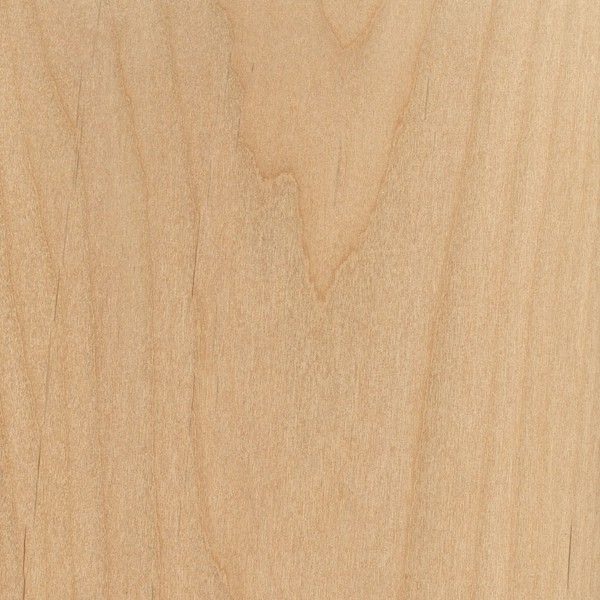
Alder
Alder tends to be a light tan to reddish brown; color darkens and reddens with age. There is no visible distinction between heartwood and sapwood. The overall grain pattern and appearance is similar to Birch , though redder than Birch and both are derived from the same family, Betulaceae. Alder grain is generally straight, with a moderately fine, uniform texture.
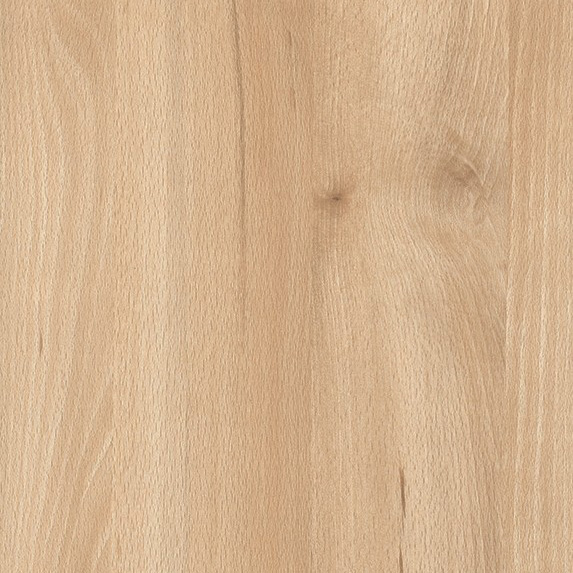
European Beech
Beech is typically a pale cream color, sometimes with a pink or brown hue. Veneer tends to be slightly darker colored, as slicing the veneer usually requires the wood to be prepared with steam, which gives the wood a more golden tone. Flatsawn surfaces tend to be very plain, while quartersawn surfaces exhibit a silvery fleck pattern. Grain is straight, with a fine to medium uniform texture. Moderate natural luster.
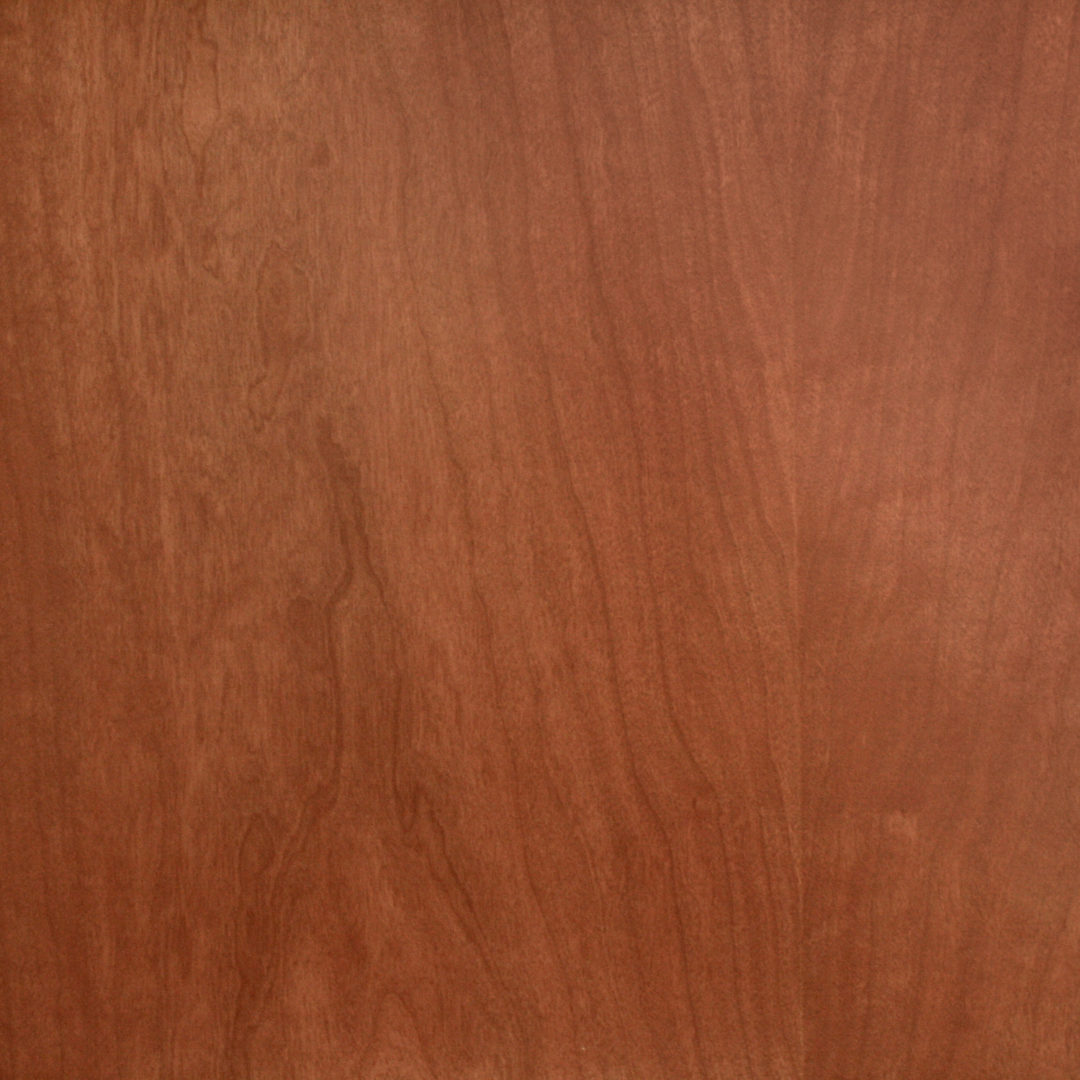
Cherry
Cherry’s smooth, tight grain, rich color, and stability have won high favor for use in kitchen cabinetry. Cherry ranges in color from white to deep red-brown. It is exceptionally stable & unsurpassed in its finishing qualities. Cherry’s color deepens and mellows with age due to its unique photosensitivity.
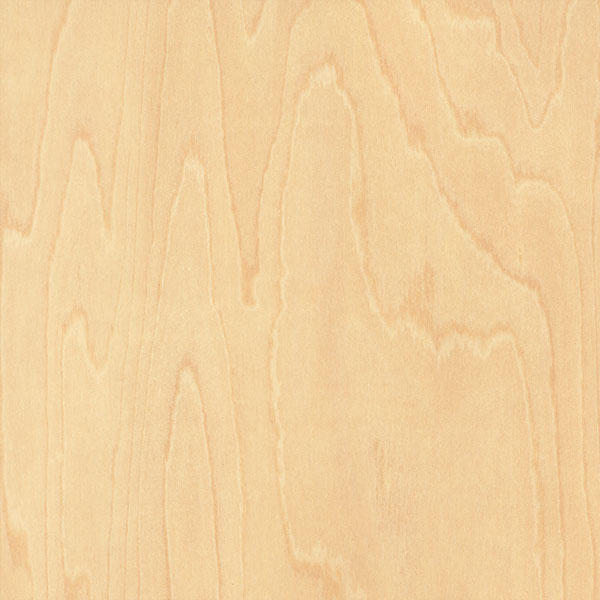
Maple
Maple is a strong, evenly textured wood with a natural luster. While it is very uniform, you will notice random mineral streaks, worm tracks, or birds-eye patterns. The grain is primarily straight, but can be wavy at times. Maple is a closed-grain wood that sands to a very smooth finish. As it ages, maple will take on a golden hue. Due to the density and hardness of maple, natural expansion and contraction may be more apparent at joints than with softer hardwoods.
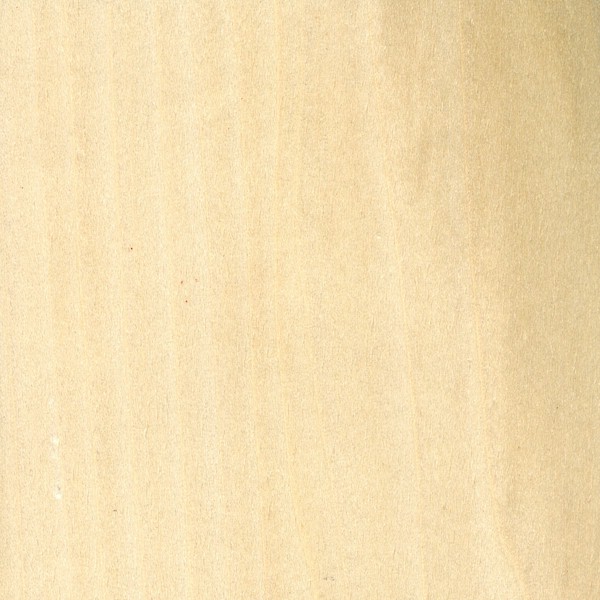
Yellow Poplar
Poplar is light cream to yellowish brown, with occasional streaks of gray or green. Sapwood is pale yellow to white, not always clearly demarcated from the heartwood. Can also be seen in mineral stained colors ranging from dark purple to red, green, or yellow, sometimes referred to as Rainbow Poplar. Colors tend to darken upon exposure to light. Poplar typically has a straight, uniform grain, with a medium texture. Low natural luster.
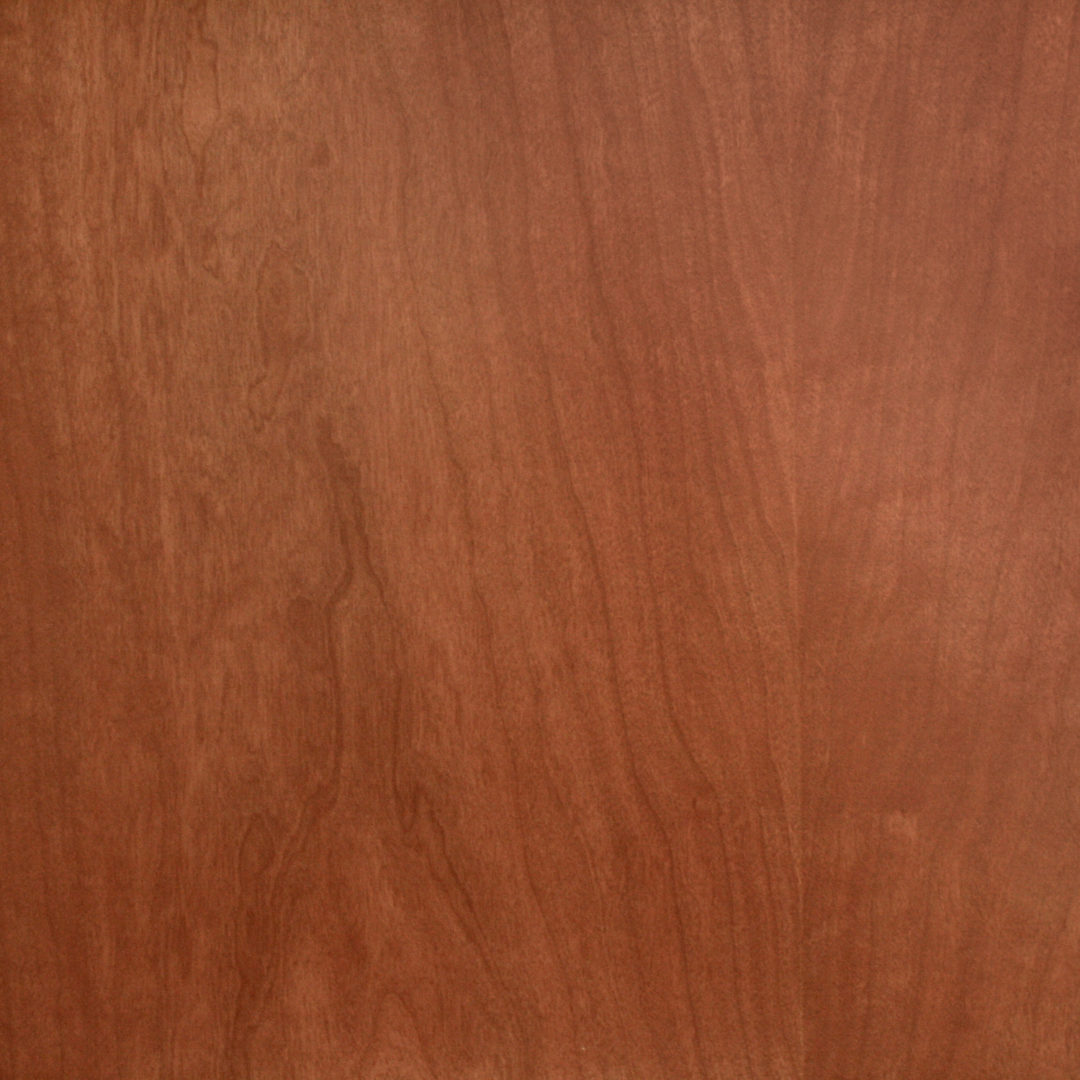
Walnut
As the only dark-brown domestic wood species, walnut wood is hard, dense and tight-grained. It’s prized by woodworkers for its strength, grain and deep color. It polishes to a very smooth finish, and the color ranges from creamy white in the sapwood to a dark chocolate in the heartwood. Over the years, natural walnut wood develops a lustrous patina.
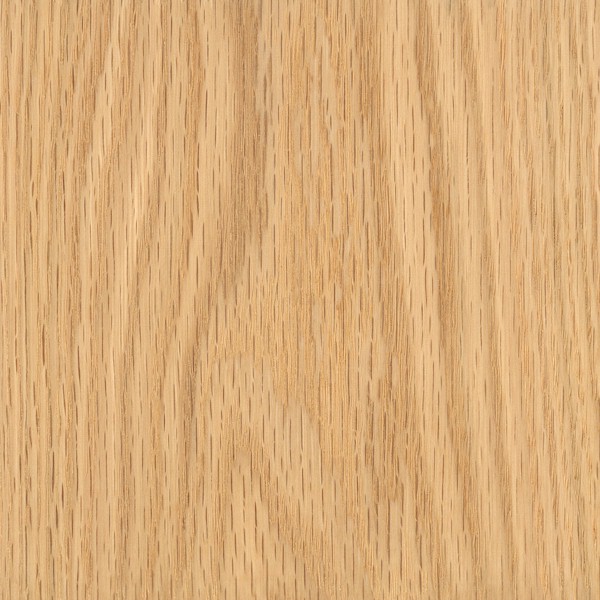
Red Oak
Oak is strong, warm, and open-grained. Because of oak’s open grain it has a semi-smooth feel after it has been finished. Oak stains easily and evenly with a pronounced grain. Some color variation from reddish-tan to medium brown is possible in its natural state. Occasional pin knots and mineral streaks are also characteristic of oak.
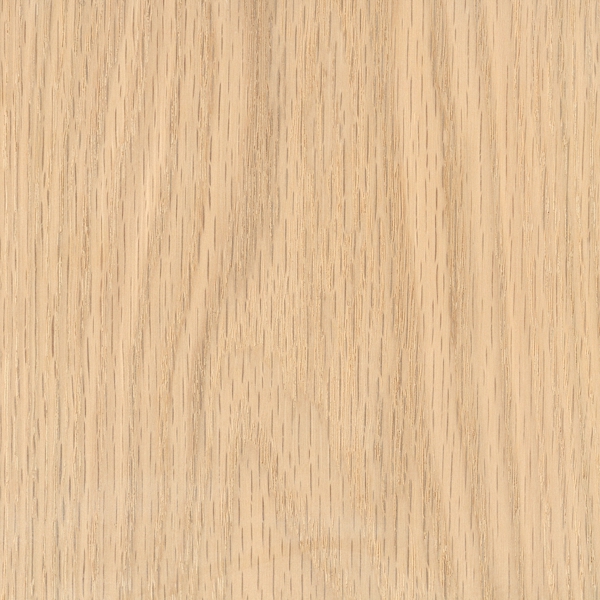
White Oak
White Oak heartwood is light to medium brown in color, commonly with an olive cast. Nearly white to light brown sapwood is not always sharply demarcated from the heartwood. Occasional pin knots and mineral streaks are also characteristic of oak.
To fully understand the differing patterns of wood grain, it’s important to compare various sawing methods. The way the log is cut is what creates differences between grains. There are four cuts commonly used for cabinetry: plain sawn, quarter sawn, rift sawn and live sawn. Barbosa has extensive experience creating cabinetry with each of these cuts.
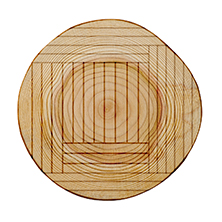
Plain Sawn
Plain sawn is the most common cut and was the standard for homes built the first half of the last century. Typically, two to three-inch planks of red oak were used, featuring a “cathedral” pattern in the grain. Annual growth rings were very prominent, at a zero to 35-degree angle.
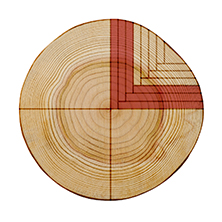
Quarter Sawn
Quarter sawn gets its name from the fact that the log is cut into quarters. This cut features annual growth rings at a 60 to 90-degree angle. This creates a visually appealing, somewhat tight vertical grain pattern, often with dramatic flecking.
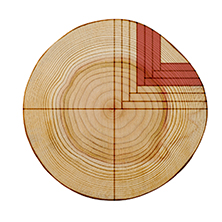
Rift Sawn
Rift sawn produces a unique linear or vertical grain pattern with no flecking. The annual growth rings are typically between 30 and 60 degrees. Rift and quarter-sawn cabinetry are aesthetically more appealing than other cuts, due to the minimal grain activity. The cabinetry is also more dimensionally stable.
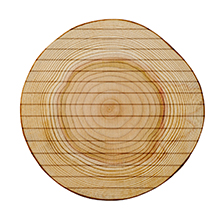
Live Sawn
Live sawn starts with a straight cut through the log, which provides a full range of the wood’s natural characteristics. The grain pattern varies, with vertical grain on the edges. This result is naturally beautiful cabinetry. The wider the plank, the more uniquely beautiful the grain.

